Bonfires, fairs, frolics and fairies - a look back at the ancient traditions of midsummer and St. John’s Eve
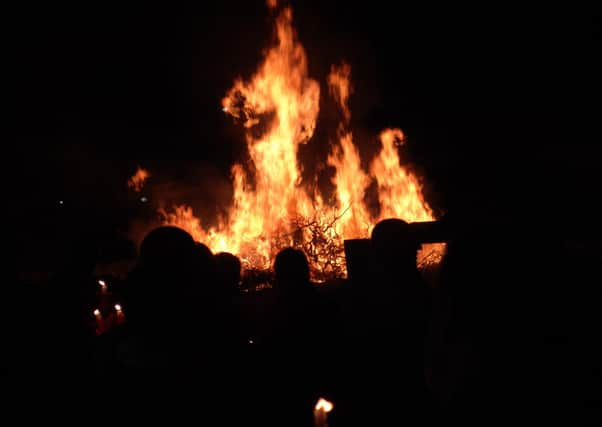

It’s believed the summer solstice, or grianstad an tsamhraidh, falling on June 21, under the current Gregorian calendar, is likely to have been celebrated in pre-Christian Ireland as a festival of the sun. More recently these celebrations became conflated with the Christian feast of St. John the Baptist which falls on June 24.
This followed a pattern that saw the old harvest festivals of Lúnasa and Samhain (Hallowe’en) becoming associated with the feasts of the Assumption and All Souls’ Day respectively - apparently through the influence of centuries of Christian proselytisation in Ireland.
Advertisement
Hide AdAdvertisement
Hide AdHowever the pagan and the Christian traditions came together we know that less than a hundred years ago this week would have been marked by dancing on the hilltops and cross-roads in rural parts of the north west of the kind that was so famously alluded to by Brian Friel in his masterpiece ‘Dancing at Lughnasa’, if not on the solstice itself (last Monday) then on St. John’s Eve (Wednesday just past).
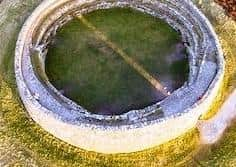

A fantastic source of the rich lore associated with this time of year is the Irish Folklore Commission’s Schools’ Collection which under the direction of Séamus Ó Duilearga and Séan Ó Súilleabháin saw thousands of traditions and stories collected from schoolchildren attending national schools in the 26 counties from 1937 to 1939.
Dozens of yarns were collected from pupils in Inishowen, Fanad, Rosguill, the Laggan, Gweedore, the Rosses and Southwest Donegal. The collection affords a fascinating glimpse of the customs and traditions of that generation and those that preceded it.
From the stories collected we know that the midsummer celebrations were closely bound up with the economic life of the country folk.
Advertisement
Hide AdAdvertisement
Hide AdFrom Jim Logan, a pupil from Carrowmore, near Glentogher, who attended school in Malin, the festivities on St. John’s Eve were closely integrated with the agricultural economy of Inishowen.
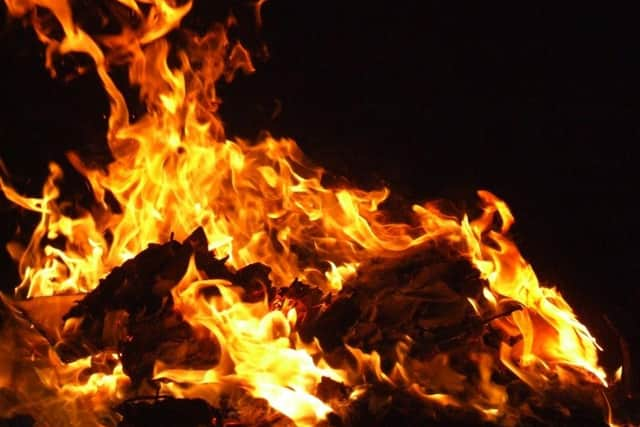

“There are three fairs held in the year. One at midsummer, one on the first day of August and one on Hallowe’en day. If we are at school that day we can hear the bleating of the sheep and the roaring of the cattle. We love to watch the people making bargains.
“The crowd gathers and for about ten minutes there is a lot talking and after the price is fixed hands are struck and then we know the bargain is settled. The money is paid later and luck money is given by the seller.
“Farmers sometimes sell animals at home to men who go round buying them. They do not care to do this as they often get a better price at the fair.”
Advertisement
Hide AdAdvertisement
Hide AdSadie McLaughlin, from the same school, attested to the importance of the midsummer fair.
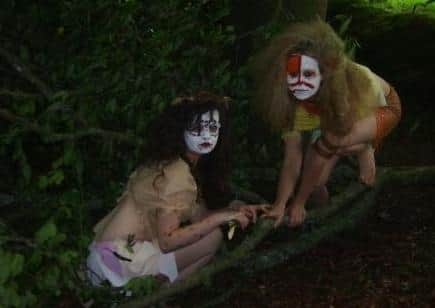

“If we are at school that day we enjoy watching the cattle and sheep coming and going and men making bargains. We listen to them talking about the price and when it is fixed the men strike their hands in agreement. Luck money is always given back by the seller.
“When an animal is bought the rope is in most cases given with the animal. Malin fair is never a big fair, only cattle and sheep are sold. Fairs were never held at crossroads in this district.”
Christmas customs of yesteryear as told by schoolchildren of the 1930sSusan Doherty, got an interesting story from a Hugh Doherty, aged 52, of Ture, about an old saying associated with flax production.
Advertisement
Hide AdAdvertisement
Hide Ad“Farmers know when their flax is growing well enough by this saying, ‘Your flax should cover a crow at midsummer’. This means, if a crow lights in it, you would not see her,” she related.
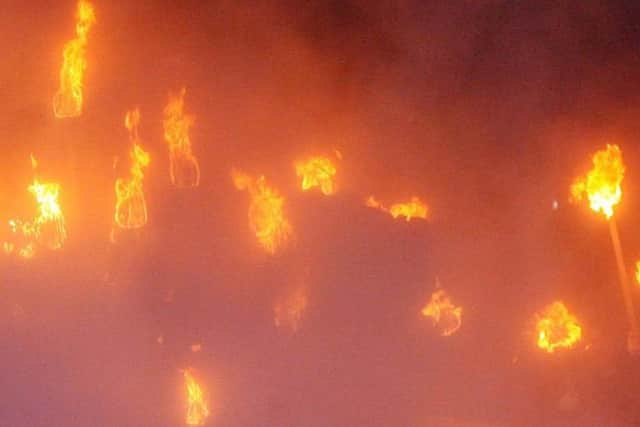

Susan had another good yarn about that famed harbinger of summer, the cuckoo, and its supposed habits when sojourning in Ireland.
“It is said that the cuckoo leaves Ireland on June 22 and goes to the fair of Raphoe which is held on June 22 and after the fair leaves this country.”
Michael Gallagher, aged 75, told Sean Kelly, a pupil at Na Frasa school, in Frosses, South Donegal, that people should always expect a change of weather at midsummer.
Advertisement
Hide AdAdvertisement
Hide Ad“If the weather is good up to midsummer they think that it will then change and that a bad harvest will follow. This year the weather is bad and the people are waiting anxiously for a change at midsummer because they think we will then have a good, dry, harvest,” he said. That was in 1938.
Once the day’s work was done and the last bargains had been struck at the fair the bonfires would be lit and the fun would begin.
Seoirse Ó Dochartaigh, a school teacher in Carrowmore, Inishowen, recorded: “On St. John’s Eve the bonfires are lighted in every townland and all the young people gather and dance and sing to midnight. Different townlands vie with one another to see which will have best fire.”
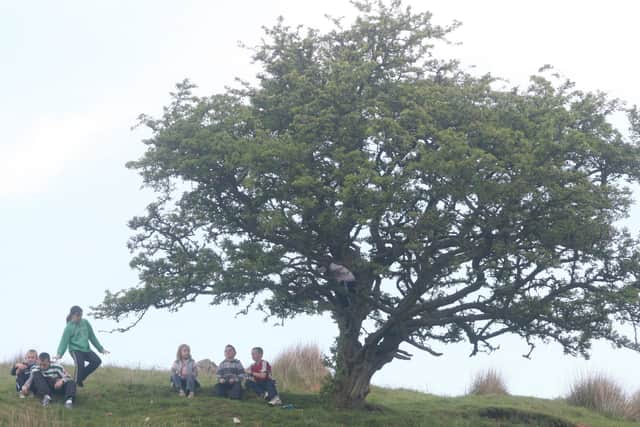

Mr. Ó Dochartaigh, tells of an old piseog that the people would observe.
Advertisement
Hide AdAdvertisement
Hide Ad“Some farmers light fire on their farm and burn some straw in it and scatter the coal around the crops and after it cows’ tails. The coal is supposed to keep away the fairies.”
Sr. M. Beirín Ní Bhaoighill, a schoolteacher at nearby Clochar na Trócaire, Carndonagh, paints a similar scene.
“On St. John’s Eve a great fire is made of logs of fir and sticks. When the fire is lighted the people dance beside it and they play many musical instruments. It is customary for them to stay out very late singing and dancing. When the fire is nearly dead the cows and horses are driven around it as it is said that this brings a blessing on them.”
Grandfather and granddaughter join forces for book on Irish traditions and superstitionsSr. M. Beirín was aware of the same superstition referred to by Ó Dochartaigh.
Advertisement
Hide AdAdvertisement
Hide Ad“A coal is then taken from the fire and placed in each of the fields, and the ashes are also scattered through them and it is believed that there are better crops when this is done. A burning faggot is also thrown over the dwelling-house and each of the out-houses. When the cows are going into the byre it is customary for the people to throw a burning coal after each one to bring luck on them. Before the crowd scatters from the fire each person kneels down and says five Our Fathers and five Hail Marys in honour of St. John.”
Sarah Thompson, aged 12, attended St. Davadogs, Tamney, in Fanad. Her father Hugh Thompson, who was aged 67, told her why bonfires were lit.
Hugh was aware it was a practice not only confined to Ireland but part of a deeper cultural seam that has been represented in art as far away as Russia in works as varied as composer Modest Mussorgsky’s ‘Night on Bald Mountain’ - famously featured in Disney’s ‘Fantasia’ - and Nikolai Gogol’s short story ‘St. John’s Eve.’
“This custom has come down to us from the time the Irish were Pagans and worshipped the Sun. It was not the people of Ireland alone put up Bonfires.
Advertisement
Hide AdAdvertisement
Hide Ad“The people of Sweden and Norway put up Bonfires too. The people of Sweden and Norway go up to hills and put up Bonfires and play a melodeon and they dance to it.
“Those people do not see the sun for many months. They are so glad to catch a glimpse of the sun once more that they welcome it with fires, songs and dances.”
Hugh told Sarah that the bonfires in Ireland were lit to honour the sun too because if its light was withdrawn, it would mean an end of all the vegetable and animal life on earth. The same piseoga that existed in Inishowen applied in Fanad equally.
A scare at bedtime: Stumpy still roams the braes of Craighadoes“On midsummer night the ancient Irish had a belief which still exists in various parts of the country. This was that the fairies and witches were out on that night and they were riding on broomsticks through the air, the fires are put up to keep them away.
Advertisement
Hide AdAdvertisement
Hide Ad“It is said that the fairies on midsummer night come and they play sweet music and entice the people to come with them and take them to their caves and the people do not come back again. After some years, some of the people comes back again and they never grow bigger and they always stay at the same size as they went to the fairies’ caves.”
Down the county Mr. Gallagher told Sean Kelly how the old people used to call bonfire night Oidhche Fhéil Eoin - the Irish for St. John’s Eve.
Michael was 75 c.1938 and thus the ‘old people’ he was talking about could have been people alive in the early 1800s.
“The young people make preparations for bonfire night. They gather turf, sticks, shavings and fir. They light the fire a little after sundown. Generally there is a fire at every house and on a small hill a large fire is lighted. The young people gather to this large fire later. There is a custom connected with bonfire night. It is called ‘Blessing the Crops’. The young people make torches. They get a bag and they dip it in oil. Then they tie it to a seasoned piece of fir. Each person gets a torch.
Advertisement
Hide AdAdvertisement
Hide Ad“Then the young people walk from one cultivated field to another. They make the sign of the cross on each field. Then they think that God will bless the crops. One would think that it was the fairies that were moving about through the fields. When the crops are blessed they return to their own bonfire. The family circle sit round the fire and there are cheers and counter cheers. Each family likes to have the biggest fire in the district. After a while the fires die out and the young people go to the large fire on the neighbouring hillside.
“They bring melodeons and mouth organs with them. They dance and sing around the fire. Sometimes they go from one bonfire to another, and they play their melodeons along the way. They then return home at break of day.”
In Rosguill the bonfire tradition was beginning to fade according to Moira McGirr, a girl from Ballykillowen,who asked her mother about it in October 1938.
“This custom is largely dying out also, except in mountain districts. For a week before the bonefire the young people are gathering firing of every description, that is turf, wood, furze, anything that will burn and bringing it to whatever place they intend making a fire.
Advertisement
Hide AdAdvertisement
Hide Ad“Generally the fire is made on a hill. In the evening the firewood and turf are piled up and set alight. The young all gather together bringing some musical instrument; a violin or melodeon, they dance and sing and make fun till all is burnt out.
“Besides the fire on the hill, a fire is also made at every house. When the fire is half burnt out, the man of the house comes and takes a bucket of coals from the fire. He goes to his fields and throws a coal into every crop he has, that is in his potatoes, oats, grass, turnips, and any other crop he may have, each gets a coal from the Bonefire. This is done to bring luck on his crops.”
Willie Timoney, a boy from the same area, said: “Another old custom still surviving on in this locality is the bonfire or teine cnámha held on St. John’s Eve. A fire is made out on some high place at every house on that night. The young people of the place gather to some particular fire and dance and sing and play tricks for a few hours.
“The man of the house goes to the fire and takes a coal for each crop he has, and throws the coal into the field. This is supposed to bring him better crops.”
Advertisement
Hide AdAdvertisement
Hide Ad‘They fell upon the Bishop and they mangled him with many a wound’ - 420 years ago Bishop Redmond O’Gallagher was murdered by Henry Docwra’s men outside DerryOne can readily imagine the heady excitement of the fair, the torchlit processions, the music and dancing, the ancient rites, the blaze of the fires, having a powerful effect. As the midsummer light faded tricks would surely been played on the imagination and strange tales would have been exchanged.
Some of these have been passed down via the Schools’ Collection.
Sean Kelly was a pupil from Stranorlar and he got one of these yarns from an informant called Miss W. Bonar, whose age is not recorded.
She told of a spooky encounter said to have been experienced by a member of the Anglo-Irish Hayes family at Drumboe Castle at midsummer at some point in the late 1700s or early 1800s.
Advertisement
Hide AdAdvertisement
Hide Ad“During the lifetime of Lady Hayes she had in her employment a maid named O’Reilly from Cork.
“A neighbouring woman named Kate McGrath did the laundry for her.
“On St. John’s Eve Miss O’Reilly went to the house of Kate McGrath and stayed to a late hour of the night.
“On her way home she came upon the Abbey Field. There was a torchlight procession of men dressed in white.
Advertisement
Hide AdAdvertisement
Hide Ad“She stood for a while looking at the scene and then continued on her way unperturbed by what she had seen for she thought that the people of Donegal still kept to the old custom of having a procession on St. John’s Eve.
“When she arrived at the Castle she asked the maids did they still hold a procession on St. John’s Eve and they said no.
“She then realised that they were ghosts and she was more convinced of this when she learned that the Astercian-Monks [sic] dwelt here.
“Such is the story of the Abbey Well told by Miss O Reilly to some neighbouring woman some time later.
Advertisement
Hide AdAdvertisement
Hide Ad“It is said that Sir Samuel Hayes found a holy water font in the Abbey Field and he buried it in the Castle-Treasure yard.”
‘Plague, galar-breac, the flux and fever raged and many people died’ - the ‘Journal’ examines millennia of pandemics in DerryRita McGowan, from Carnagarve, was one young girl who took part in the project in the late 1930s.
Though her age is not given we know she attended the Convent of Mercy, in Moville. She got a story from a Mr. Kilmartin, who lived in Quay Street, about the goings at midsummer in a glen near the town where fairies were reputed to live.
It concerned a master fiddler who became enchanted by the music of the sídhe.
Advertisement
Hide AdAdvertisement
Hide Ad“One midsummer night a goodly company of young people were gathered in a house for a night’s amusement.
“The fiddler for the occasion was a noted favourite who always gave of his best on all occasions.
“After partaking of a hearty supper made up of home-made bread, butter, and jam with sweet milk.
“The party were seated round a bright peat fire cracking jokes or listening to tales of heroism told by the old couple of the house.
Advertisement
Hide AdAdvertisement
Hide Ad“Just at midnight the faintest music was heard. So beautiful it was that the fiddler was visibly moved and thrown into an ecstasy.
“His eyes shone like brilliant stars. His body trembled while his hands clenched tightly his beloved fiddle,” the story went.
Mr. Kilmartin told Rita that all of the company were terrified at the fiddler’s transformation. However, none of them could speak and they continued listening with rapt attention as the otherworldly music drew nearer.
“All believed that it could not be produced by any mortal person.
Advertisement
Hide AdAdvertisement
Hide Ad“No one but the fairies could bring out such delightful notes on a violin. Suddenly the fiddler arose, his face all aglow. He rushed to the door and out into the open.
“All voices could be heard calling on the fiddler to stop. But still the music continued although it grew fainter and fainter. The fiddler followed the fairy music.
“The people could hear the fairy music and the fiddler’s voice calling. The people saw the fiddler climbing up a mountain until he was lost to view. That was the last sight they had of their beloved fiddler as he was never seen or heard of again.”
Approximately 740,000 pages (288,000 pages in the pupils’ original exercise books; 451,000 pages in bound volumes) of folklore and local tradition were compiled by pupils from 5,000 primary schools in the Irish Free State between 1937 and 1939 as part of the Schools’ Collection project.
Advertisement
Hide AdAdvertisement
Hide AdThe scheme resulted in the creation of over half a million manuscript pages and is generally referred to as ‘Bailiúchán na Scol’ or ‘The Schools’ Collection’.
They are available to view and read at the excellent https://www.duchas.ie/ website.